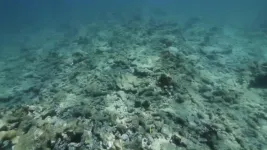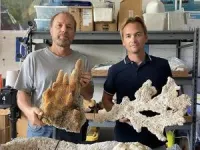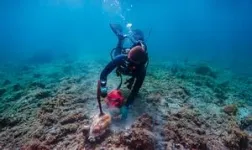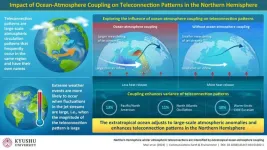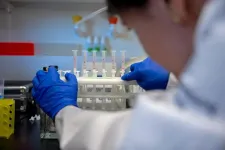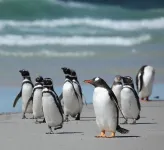What can thousands of years of history tell us about what lies ahead for coral reef communities? A lot. In a new study, Florida Atlantic University researchers and collaborators provide geological insights into coral range expansions by reconstructing the composition of a Late Holocene-aged subfossil coral death assemblage in an unusual location in Southeast Florida and comparing it to modern reefs throughout the region.
Located off one of the most densely populated and urbanized coastlines in the continental United States, the Late Holocene coral death assemblage known as “Pompano Ridge,” records a northward range expansion of tropical coral communities that occurred during a period of regional climate warming more than 2,000 years ago.
Could this happen again in the face of climate change? Going “back to the future,” this study offers a unique glimpse into what was once a vibrant coral reef assemblage and explores if history can repeat itself.
Results of the study, published in the journal Communications Earth & Environment, reveal significant differences in coral composition between Late Holocene and modern assemblages, suggesting that ongoing environmental stressors that were not present during the Late Holocene will likely limit the ability of modern higher latitude reefs in Florida to function as long-term climate refuges.
“Today’s environmental conditions and ecology have substantially deviated from long-term Holocene baselines that occurred over millennial timescales,” said Anton E. Oleinik, Ph.D., co-author and an associate professor of geology, Department of Geosciences, FAU Charles E. Schmidt College of Science. “Based on the findings from our study, we are not overly optimistic that Florida’s subtropical reefs will be able to support range expansions of reef-building coral species reminiscent of the Late Holocene any time soon.”
Findings show that Late Holocene coral assemblages were dominated by now critically endangered Acropora species (stony coral) between 1,800 and 3,500 years ago, mirroring classic zonation patterns characteristic of healthy pre-1970s Caribbean reefs.
“What’s really remarkable is that we didn’t find these subfossil corals in the middle of the Caribbean like Belize or Bonaire. We found them right here in South Florida well beyond their present-day core range,” said Alexander B. Modys, Ph.D., first author and a recent doctoral graduate in FAU’s Department of Geosciences. “What existed here thousands of years ago is similar to what we would have seen in Jamaica in the 1950s and 1960s.”
In contrast, the modern reefs off Southeast Florida are becoming increasingly dominated by stress-tolerant species like Porites astreoides (mustard hill coral) and Siderastrea siderea (round starlet coral), partly due to their resistance to thermal stress, sedimentation, and more recently, stony coral tissue loss disease.
Researchers conducted surveys along 16 transects across the full extent of the coral rubble zone in the study area and identified 21 unique coral groups. To determine how current assemblages at the study site compared with the Late Holocene assemblages, they collected live coral abundance data along the same 16 transects in the summer and fall of 2018. They also compared the composition of the Late Holocene assemblages to publicly available data for the entire reef tract off Southeast Florida from the Southeast Florida Coral Reef Evaluation and Monitoring program, allowing for a comprehensive analysis that spans the full extent of the region's coral communities.
A total of 1,949 coral skeletons were identified and qualitatively evaluated based on their overall preservation in terms of abrasion, presence of original corallite material, and encruster communities. Researchers used Uranium-Thorium dating to determine their age, which ranged from 900 to 4,500 years old. Subfossil samples included well-preserved Late Holocene-aged elkhorn coral (A. palmata), which made up nearly 50 percent of the samples, mountainous star coral (Orbicella spp.) and pillar coral (Dendrogyra cylindrus), a hard coral that is now genetically extinct along the Florida reef tract due to a disease outbreak in 2014.
The author's research suggests Southeast Florida could offer a haven for corals that are being devastated by climate warming in the tropics. However, they caution that the range expansions observed in the past are unlikely to happen today without direct human intervention.
“The rapid decline of southern source populations and the added anthropogenic stressors that weren’t present during the Holocene are likely inhibiting the natural expansion of tropical corals we’d expect to see with climate warming,” said Modys. “They aren’t going to get there on their own so more aggressive conservation strategies like assisted migration may be needed.”
The Late Holocene record from Pompano Ridge provides a foundation for not only identifying areas that could serve as critical climate refuges for corals in the future, but also for developing comprehensive restoration and management strategies that aim to replicate the successful ecological attributes of historical coral communities, ensuring their long-term sustainability. However, climate change remains a major obstacle even on higher latitude reefs.
“It is important to emphasize that the long-term sustainability of these restoration activities will ultimately depend on the rate and magnitude of present-day climate warming,” said Oleinik. “If climate warming continues at its present rate, it will become too warm even at historically cooler, higher latitude locations like Southeast Florida, and sadly, these restoration programs won’t be enough.”
Study co-authors are Lauren T. Toth, Ph.D., a research physical scientist with the U.S. Geological Survey; William F. Precht, Marine and Coastal Programs, Dial Cordy & Associates, Inc.; and Richard A. Mortlock, Ph.D., an assistant research professor, Department of Earth and Planetary Sciences, Rutgers University.
Funding for the study was provided by the U.S. Geological Survey Coastal/Marine Hazards and Resources Program.
- FAU -
About Florida Atlantic University:
Florida Atlantic University, established in 1961, officially opened its doors in 1964 as the fifth public university in Florida. Today, the University serves more than 30,000 undergraduate and graduate students across six campuses located along the southeast Florida coast. In recent years, the University has doubled its research expenditures and outpaced its peers in student achievement rates. Through the coexistence of access and excellence, FAU embodies an innovative model where traditional achievement gaps vanish. FAU is designated a Hispanic-serving institution, ranked as a top public university by U.S. News & World Report and a High Research Activity institution by the Carnegie Foundation for the Advancement of Teaching. For more information, visit www.fau.edu.
END
